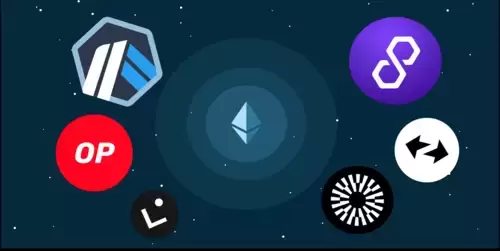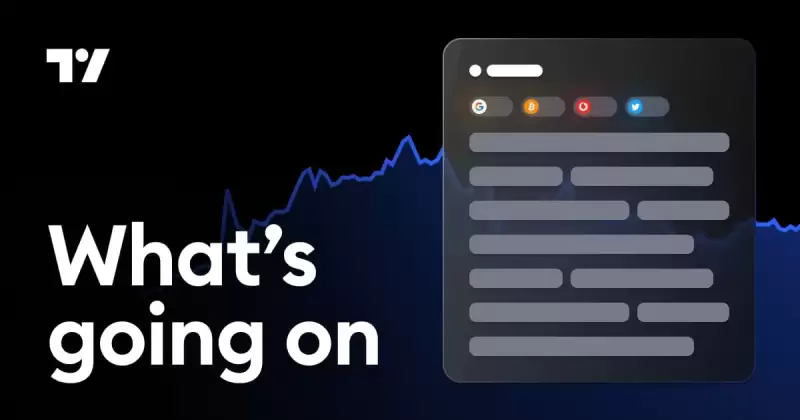 |
|
 |
|
 |
|
 |
|
 |
|
 |
|
 |
|
 |
|
 |
|
 |
|
 |
|
 |
|
 |
|
 |
|
 |
|
上週,加密貨幣空間發生了很大的事情,但只有少數人完全理解其意義。

Last week, something huge happened in crypto, but few realized its full implications. Celo announced its transition from an independent L1 blockchain to an L2 blockchain on Ethereum.
上週,加密貨幣發生了巨大的事情,但很少有人意識到它的全部含義。 Celo宣布過渡從獨立的L1區塊鏈到以太坊上的L2區塊鏈。
This might seem like another tech migration, but it’s a sign of a broader shift that Ethereum has been silently driving, one that’s quickly changing how we view projects in crypto. Let’s break this down further.
這似乎是另一種技術遷移,但這是以太坊一直在默默地駕駛的更廣泛轉變的跡象,這種轉變正在迅速改變我們在加密貨幣中的看法。讓我們進一步分解。
1. Industry begins to take cost & revenue issues seriously
1。行業開始認真對待成本和收入問題
We are in the midst of a long overdue correction. Crypto markets are beginning to refocus on fundamentals. Narratives still matter, but now people are asking:
我們正處於長期的逾期校正之中。加密市場開始重新關注基本面。敘事仍然很重要,但是現在人們在問:
* What’s the actual revenue of this chain?
*該鏈的實際收入是多少?
* How much does it cost to operate?
*運營費用是多少?
* Where does value accumulate?
*價值在哪裡積累?
A host of new metrics, like market cap to revenue (REV), are coming into play, revealing stark differences between seemingly similar blockchains.
許多新的指標,例如收入市值(REV),都在發揮作用,揭示了看似相似的區塊鏈之間的明顯差異。
This may be why Celo decided to switch to Ethereum L2.
這可能就是為什麼Celo決定切換到以太坊L2的原因。
2. L1 cannot generate revenue, but L2 can
2。 L1無法產生收入,但是L2可以
This is often overlooked: L1 chains are not able to generate revenue in a sustainable way.
通常會忽略這一點:L1連鎖店無法以可持續的方式產生收入。
Why? Because all value goes directly to stakers or miners. L1 collects fees, which are immediately distributed as block rewards or staking returns. There is no retained profit margin, no surplus, and no funds are left to fund innovation or protocol development.
為什麼?因為所有價值都直接歸功於Stakers或礦工。 L1收集費用,這些費用立即分配為塊獎勵或放電回報。沒有保留利潤率,沒有盈餘,也沒有資金來資助創新或協議開發。
This creates a strange situation where L1s can be extremely valuable platforms but still operate like public infrastructure, with no built-in funding mechanisms to enable their development and evolution.
這創造了一個奇怪的情況,即L1可以是極為寶貴的平台,但仍然像公共基礎設施一樣運行,而沒有內置的資金機制來實現其發展和發展。
Contrast this with L2, which is able to retain and redeploy revenue. Collator fees, maximum extractable value (MEV), or even custom charges for block space can be retained and reinvested in R&D, developer funding, growth promotion activities, or public goods. This is a model that can achieve true sustainability and align incentives over time.
將其與L2進行對比,L2能夠保留和重新部署收入。可以保留和重新投資於研發,開發人員資金,增長促進活動或公共物品的碰撞費用,最高可提取價值(MEV),甚至可以保留塊空間的自定義費用。這是一個可以隨著時間的推移而實現真正的可持續性並保持激勵措施的模型。
This is why so many new ecosystems choose to prioritize building L2. It’s not just about technical architecture, it’s also about economic design.
這就是為什麼這麼多新的生態系統選擇優先考慮建築物L2的原因。這不僅與技術架構有關,還與經濟設計有關。
3. L1 is the mainframe in the Web3 era
3。 L1是Web3時代的大型機
Here’s a simple mental model: L1 blockchains are like mainframes for crypto.
這是一個簡單的心理模型:L1區塊鏈就像加密貨幣的大型機一樣。
In the early days of the Internet, if you wanted to run a serious application, you had to buy a mainframe. You had to maintain the hardware, write your own network stack, and be responsible for every aspect of the system’s uptime, security, performance, etc. It was powerful, but expensive.
在互聯網的早期,如果您想運行嚴重的應用程序,則必須購買大型機。您必須維護硬件,編寫自己的網絡堆棧,並負責系統正常運行時間,安全性,性能等方面的各個方面。它功能強大,但昂貴。
Running an L1 blockchain today faces a similar situation. You need your own consensus mechanism, your own set of validators, and your own token incentives to secure the network. It costs you millions of dollars every year to keep the system running and secure.
今天運行L1區塊鏈面臨類似的情況。您需要自己的共識機制,自己的驗證器集以及自己的令牌激勵措施來確保網絡。它每年花費您數百萬美元,以保持系統運行和安全。
Taking Celo as an example, they spend 4% to 6% of the total token issuance each year, about 15 to 25 million US dollars per year, just to maintain basic security and normal operation of the system.
以Celo為例,他們每年要花4%至6%的代幣發行,每年約15至2500萬美元,只是為了維持系統的基本安全性和正常運行。
This is not uncommon. It’s true for Ethereum and it’s true for Solana. Every independent L1 has to bear this cost. But the key is: this cost does not decrease with scale. If you are a smaller L1 chain, the cost you bear may be overwhelming.
這並不少見。以太坊是正確的,對於Solana來說也是如此。每個獨立的L1都必須承擔這一費用。但是關鍵是:此成本不會隨規模而降低。如果您是較小的L1鏈,那麼您承擔的成本可能會壓倒性。
4. L2 is like a hosted server: just as powerful, but cheaper
4。 L2就像託管服務器:強大但更便宜
Now imagine that instead of running a mainframe, you switch to a managed server.
現在,想像一下,您沒有運行大型機,而是切換到託管服務器。
You still have control over your environment, you can customise how your blockchain runs, and you still have autonomy over execution, but you don’t have to secure the physical equipment yourself, which is what L2 on Ethereum does.
您仍然可以控制自己的環境,可以自定義區塊鏈運行方式,並且仍然具有執行自主權,但是您不必自己保護實物設備,這就是以太坊上的L2。
Celo, as L2, will still provide the same user experience. But now, the heavy lifting of security, such as fraud proofs, consensus mechanisms, and finality of the base layer, is handled by Ethereum. The cost of maintaining this chain has dropped significantly.
celo,如L2,仍將提供相同的用戶體驗。但是現在,以太坊處理了安全的繁重提升,例如證明欺詐,共識機制和基礎層的終結性。維持這家連鎖店的成本已大大下降。
Instead of $20 million per year in security costs, the costs are now just state storage fees and data availability costs, which can be further reduced through data compression and the use of alternative data availability layers (Celo chose EigenDA).
這些成本現在只是州存儲費和數據可用性成本,而不是每年的安全成本2000萬美元,可以通過數據壓縮和使用替代數據可用性層(Celo選擇Eigenda)進一步降低。
5. Why this is a strategic masterstroke for Ethereum
5。為什麼這是以太坊的戰略碩士
This isn’t just about Celo; it also means that Ethereum’s long-term strategy is finally starting to fall into place.
這不僅僅是Celo;這也意味著以太坊的長期戰略終於開始到位。
Ethereum is no longer seeking to be the “one server to rule them all.” That vision of a single dominant chain has been proven wrong in every era of computing, whether it’s Web1, Web2, and now Web3.
以太坊不再尋求成為“一台服務器統治所有服務器”。在計算的每個時代,無論是Web1,Web2和現在的Web3,單個主導鏈的願景都被證明是錯誤的。
Instead, Ethereum is becoming a base layer on which other chains can be built, providing security, decentralization, and interoperability as a service.
取而代之的是,以太坊正在成為一個可以建立其他連鎖店的基礎層,提供安全性,分散性和互操作性作為服務。
Yes, at first glance this looks like cannibalization. Ethereum is reducing the “premium” of its L1 chain. But in reality, it
是的,乍一看,這看起來像蠶食。以太坊正在減少其L1鏈的“溢價”。但實際上,它
免責聲明:info@kdj.com
所提供的資訊並非交易建議。 kDJ.com對任何基於本文提供的資訊進行的投資不承擔任何責任。加密貨幣波動性較大,建議您充分研究後謹慎投資!
如果您認為本網站使用的內容侵犯了您的版權,請立即聯絡我們(info@kdj.com),我們將及時刪除。
-

- Bybit關閉其NFT和銘文市場
- 2025-04-02 18:45:12
- 加密貨幣交易所BYBIT宣布關閉其NFT和銘文市場4月8日生效,加入了越來越多的主要平台清單,這些平台放棄了曾經趨向的數字收藏品領域。
-

- X.Me驅動社會革命建立一個新的社會生態系統
- 2025-04-02 18:45:12
- X.Me是一個創新的社交媒體平台,它集成了尖端的AI技術,以挑戰傳統社交媒體的信任危機。
-

-

-

- Altcoins諾言量高達50%,這引起了投資者的困惑
- 2025-04-02 18:35:12
- 在周二早上,幾個山寨幣在全球加密交易所二元公司上高達50%,這引起了投資者的困惑。
-

-

- EOS(Vault)價格飆升20%,因為該網絡揭幕了其Vaulta銀行諮詢委員會
- 2025-04-02 18:30:12
- EOS是EOS網絡背後的加密貨幣,一直處於顯著的向上軌跡,價值超過20%
-

-

























































